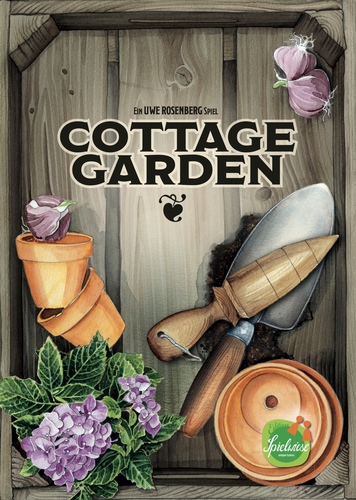Cottage Garden Board Game First Impressions
“Garden as though you will live forever.”
~ William Kent
In Cottage Garden, you compete in the art of gardening and are working two beds with a variety of flowers. Whenever no unplanted box is visible on a bed, you have completed it, then you count your points and replace it with a fresh, unplanted bed. You gain points for all of the visible plant pots and planting bells.
So in Cottage Garden, you’re building gardens by taking tiles from the main board. You then place them on one of your two player boards. Once one of them is filled, you score it and replace it with a fresh one.
The tiles you take are placed on a 4×4 grid. The grid has a die set to the number 1, placed on the starting space.
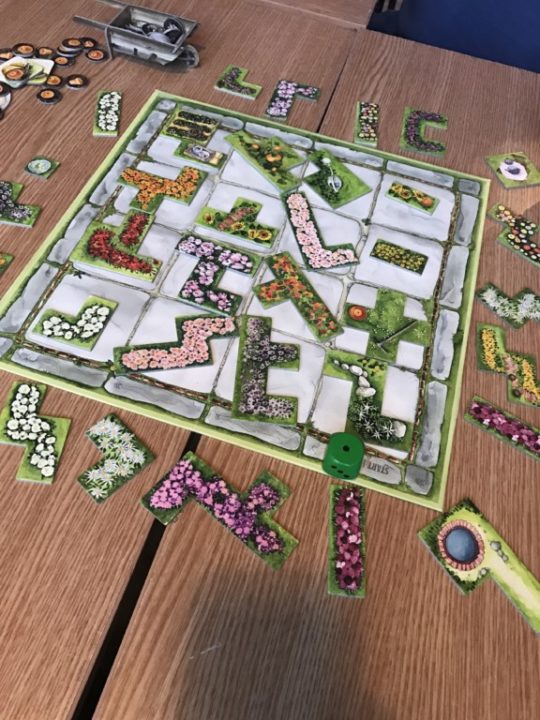
On your turn, you move the die forward one space. Then take any tile from the row the die is on. Of course, If the die is in the corner space, you take a tile from the diagonal row.
If there is 1 or fewer tiles on the row you fill it up first or you can spend a Cat token to fill the row if you like.
Instead of taking a tile from the board, you can take a Plant Pot token which fills just one space, which is useful.
When you take a tile you put it on your player board which is made up of 2 5×5 grids… You can place it anywhere as long as it doesn’t overlap a tile you have there already.
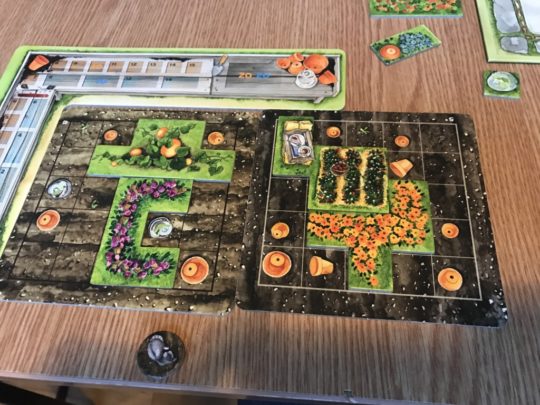
Scoring
When all the spaces are full you score it… You count each Plant Pot and each Planting Bell.
Your player boards have 2 scoring tracks, one for Pots (Orange) and one for Bells (Blue) with 3 cubes of each colour starting on 0. When you score you move one Blue and one Orange token a number of spaces equal to the number of revealed Pots/Bells.
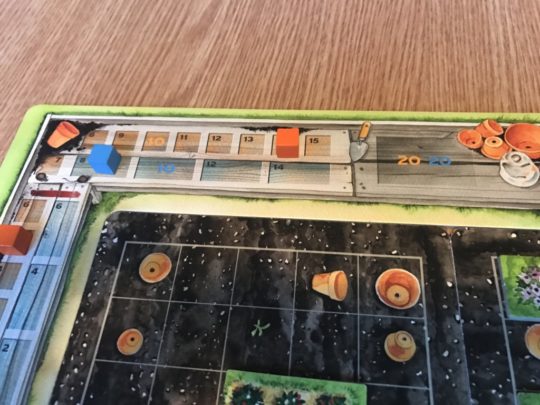
If you move a cube by that red line in the top left (with Mice on it) you gain a Cat token.
When the die moving around the board goes back to start you move it up a number and when it hits 6 and goes around the board again the game will end.
You score points for the position of each of your 6 cubes, and most points win.
Cottage Garden Positives
It takes the awesome gameplay of Patchwork and makes it available for more than 2 players.
As you can pretty much plan your turn ahead, turns are quick, very quick. They’re only slowed down by someone scoring a board.
Scoring is interesting where you can only move one cube, but there is a jump from 15 to 20 points on the scoreboard so you want to take advantage of that. But, if 20 points are 2 spaces away and you score 4 for that colour, do you waste movement points or move a different cube?
You get a wheelbarrow of Kitties 🙂
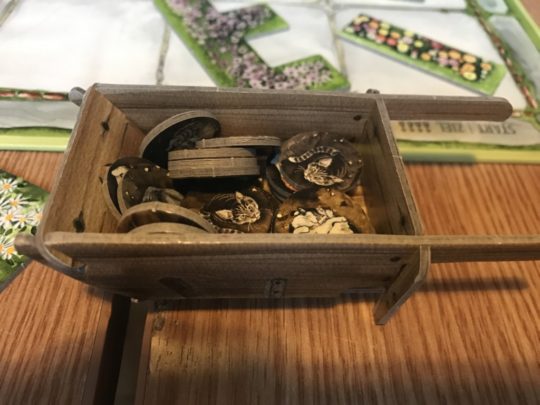
Cottage Garden Negatives
The ‘pick any tile from this row’ mechanism, while very good, is not as good as the time/last player goes next mechanism from Patchwork.
It was quite expensive for what it is I think.
Summary
I really enjoyed this. It’s a shame it’s compared to Patchwork too closely because that is a two-player game and is designed to be so. If this was the exact same game as Patchwork but with 4 players people would say it’s a cash-in. They made a similar, yet different game here and both are fun… There doesn’t have to be a winner, you can like both! 🙂
So yeah, that’s it really. It’s a nice abstract, puzzle-ish game where you’re trying to build a garden both quickly AND efficiently…
Jesta ThaRogue
